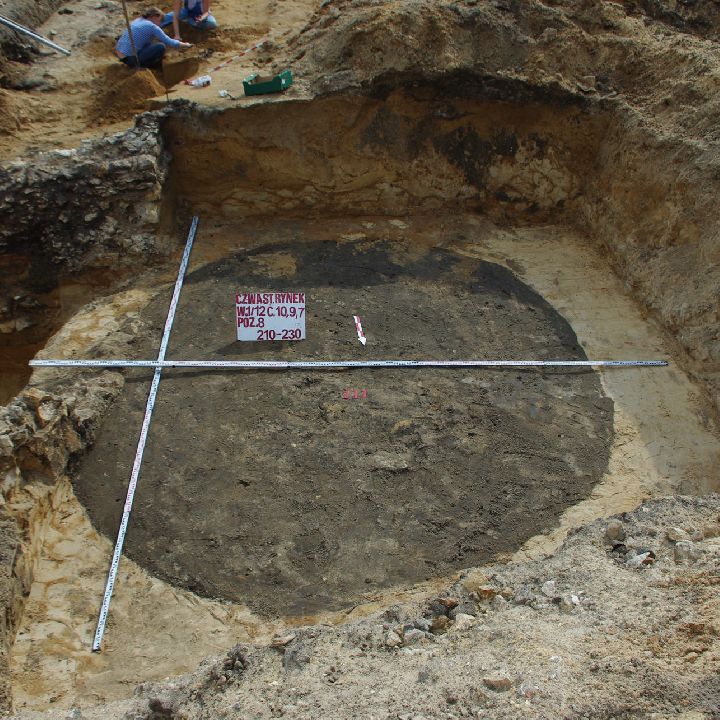Wooden well
Wells were a common element of cities. They were built right after a city was established. Public wells were located in places of importance to the urban community, especially in market squares and along important thoroughfares, in places where large numbers of people and animals lived.
Several wells were discovered in the Częstochowa market square, including the oldest three, which were important for the functioning of the market square near the town hall. Wooden wells were built using the post-and-plank technique. They were probably built at the same time as the town hall was built, or maybe even earlier, after the city's establishment. The outline of the best-preserved wooden well, located west of the cellars, appeared at a level over 2 m from the present ground level, and the outline of a poorly preserved wooden lining just over a meter below the surface. The well trench had a circular shape with a diameter of approx. 4 m, and the lining was square-shaped with dimensions of 1 m x 1 m. A ramp was built on the ceiling of the well trench, creating a wide entrance to the basement of the town hall on the west side, at its north-west corner. This means that the well was no longer used when reconstruction of the town hall commenced, probably after the fire in 1760. At the bottom, a foundation for the well was discovered, wider than the lining and built using the log method, with coal. It was observed that the well was damaged during its construction. As a result, the lining shifted by about 40 cm in relation to the foundation, on the north-south axis. After this shift (evidenced by a landslide in the southern part of the well), pillars driven into the corners of the lining were used to stabilize the well. The bottom of the well was lined with flat limestone to protect it against sedimentation. The bottom of the well was around 8-10 m deep from the modern-day paved surface. In the excavated well filling there was a large number of ceramics dated, generally, from the second half of the 16th century. At the bottom of the well, a fragment of an iron staple and several dozen larger fragments of ceramics from at least 10 objects were found, including a jug covered with brown glaze. Between the boards of the well on the south-east side a skeleton of a piglet was found. Due to the constructional defect of the well foundation, which was revealed through archaeological research, the well was not used for a very long time. That is probably why a different well was built, made of stone, located in the northern

